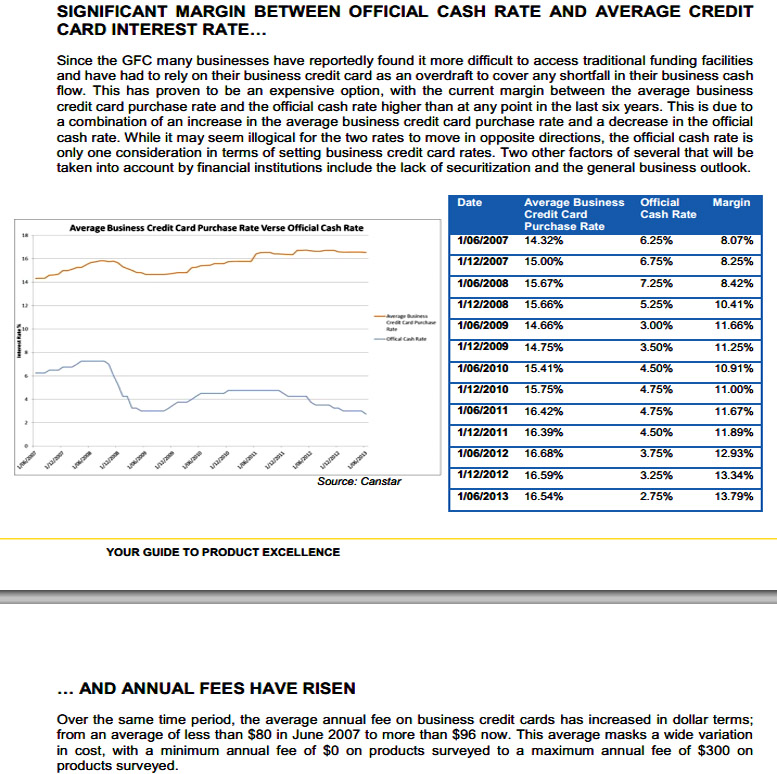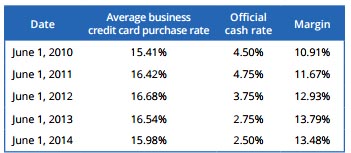Margin Between Average Business Card Purchase Interest Rate And Official Cash Rate Has Increased Materially means the RBA lowered the Cash Rate by 4.75% over the 9 years from 1 June 2007 to 2 Aug 2016, and, from time to time, applied overt pressure for commercial banks in Australia to similarly pass on reductions to housing loan interest rates which they have largely commensurately lowered.
Yet, Australia' primary prudential regulatory body, the RBA, has not taken any action to force Credit Card Issuers to lower the interest rates on their Credit Card Products.
Since publication of the below Canstar's BUSINESS CREDIT CARD STAR RATINGS report dated August 2013, the RBA has lowered the Cash Rate a further 125 BPs from the below noted 2.75% to 1.5% (as at June 2016).
The below table shows that the margin between the Canstar's average Business Card Purchase interest rate and the Official Cash Rate increased from 8.07% (as at 1 June 2007) to 13.48% (as at 1 June 2014).
Alas, plenty of Credit Card Products are still charging 20% on Purchases and 22% or more on Cash Advances, yet Credit Card Issuers can borrow funds from the RBA at the Official Cash Rate of 1.5% and up to 3% from other sources.

Extract from Canstar's BUSINESS CREDIT CARD STAR RATINGS dated August 2013

RBA has done naught to require Credit Card Issuers to lower interest rates in line with the fall in the Cash Rate notes 'inter alia' that:
"Rate rises are passed onto the consumer faster than rate cuts and the credit card interest rate showed a very significant degree of downward rigidity. Based on the magnitude of the pass-through parameters obtained from short-run dynamic models, rate rises had a full one-to-one and instantaneous impact on credit card interest rates. However, in absolute terms the short-run effects of rate cuts were not only less than half of the rate rises but also were delayed on average by three months."
See:
Lowest Interest Rate Purchase & Cash Advance Credit Cards